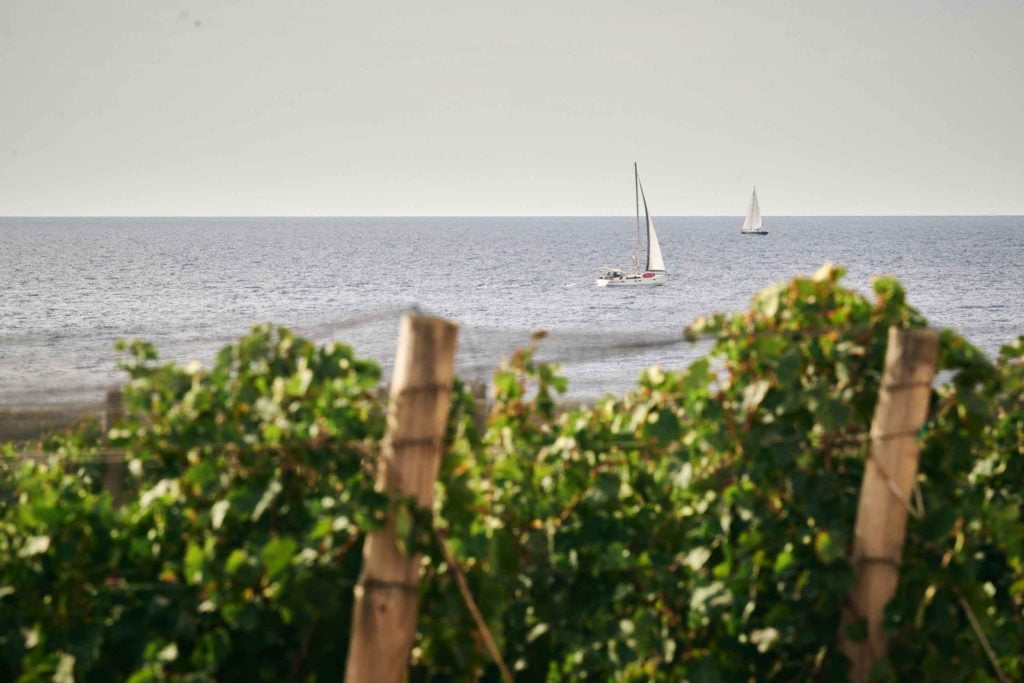How hosting the Concours Mondial de Bruxelles is placing Istrian wines in the global spotlight

Despite its relatively small size, the Croatian region of Istria has emerged as a leading destination for wine enthusiasts looking to experience exquisite wines in a stunning setting. Over the past 25 years, the region has experienced a remarkable transformation in viticulture resulting in the creation of new and innovative wine styles that have already gained international recognition. Today, Istrian winemaking is a perfect balance of traditional knowledge and modern expertise, with a focus on indigenous grape varieties that captivate wine aficionados worldwide.

To further enhance the visibility of Istrian wines, this year the town of Poreč is hosting the prestigious Concours Mondial de Bruxelles. The highly regarded competition features 350 professional judges from around the world and is a benchmark amongst international wine contests. With less than two weeks remaining before the event, the President of Vinistra – association of winegrowers and winemakers of Istria, Luka Rossi,, shares the significance of the competition for the region while highlighting the strategic initiatives that are being implemented to promote Istrian wines.
How has the wine industry in Istria evolved over the years, and what are some of the significant trends you have observed?
Over the past 25 years, Istria has undergone a tremendous transformation in viticulture and winemaking, resulting in the creation of new and innovative wine styles that have garnered attention not only in Croatia but throughout the region. Istrian wines have also earned acclaim at prestigious wine competitions. Presently, Istria boasts 3,200 hectares of vineyards, yielding an annual production of around 10 million bottles, with the Malvasia grape, the region’s most distinguished indigenous variety, dominating production. Despite being a relatively small wine region, Istria remains a highly attractive wine destination, boasting numerous wine cellars throughout the peninsula. The 40 most prominent cellars receive over 335,000 visitors annually, a remarkable figure considering Istria’s population of just over 195,000. This year, eight new cellars are slated to open, joining an association of over 120 winemakers, including both established industry leaders and rising talents whose wines are poised for recognition.
Outside of Croatia, which are the most important markets for Istrian wines?
In addition to the Croatian market, our primary export destinations include Austria, Germany, Slovenia, Serbia, Montenegro, the United States, and Canada. It is worth noting that Croatia is a renowned tourist destination, and Istria, in particular, draws a substantial number of visitors who seek out Istrian wine producers and indulge in Istrian wines at local restaurants, hotels, wineries, and wine cellars.
What are some of the challenges that winemakers in Istria face today and how do they address them?
The wine industry is currently grappling with one of its most significant challenges yet – the increasingly intense effects of climate change. With extreme temperatures and weather patterns directly impacting wine production and quality, it has become increasingly crucial to excel as both a winemaker and a winegrower. Every growing season presents new obstacles, such as last year’s severe droughts, which put our expertise to the test. However, Istrian winemakers have proven their mettle and done an outstanding job, particularly regarding the indigenous varieties Malvasia Istriana and Teran.
Istria is known for indigenous grape varieties such as Malvasia and Teran. Can you explain the efforts being made to preserve and promote these local varieties, and how they contribute to the identity and uniqueness of Istrian wine?
The modern development of Istrian winemaking is deeply rooted in our indigenous grape varieties – Malvasia Istriana and Teran. A few years back, with the aim of retaining our leading position in Croatia and the wider region, a team of experts devised a strategic plan for Istrian wine production and viticulture, outlining the objective of establishing the Istrian wine brand – particularly our indigenous Malvasia and Teran – on the global wine stage by 2030.
Since its inception, Vinistra has dedicated significant efforts to promoting and enhancing the quality of these grape varieties, while also exploring diverse winemaking techniques to diversify their styles. Thirty years ago, fresh Malvasia wines were the norm, but today, exceptional aged Malvasia wines consistently win top awards at international competitions. Similarly, both fresh and aged Teran wines have proven to be exceptional. We are proud to assert that Malvasia and Teran have become iconic symbols of Istria.
The wine tourism industry in Istria has been growing rapidly. Can you discuss the impact of wine tourism on the region’s economy?
Tourism is the most crucial economic sector in Croatia, especially in Istria, which is the most sought-after destination in the country with its exceptional gastronomy and wine offerings. Wine tourism plays a vital role in the rural development of inland Istria, which has experienced a revitalization in recent years due to its growing popularity. The wine industry has been instrumental in attracting tourists to this region and boosting the local economy.
What are the key factors that contribute to the success of Istrian wines and makes them stand out on the global wine scene?
Istria has cemented its position as Croatia’s top eno-gastronomic destination, and its global reputation is growing as more tourists flock to the region each year. Istrian wineries are committed to producing high-quality wines and showcasing them to the world. Wine production is a family affair in Istria, with traditions passed down through the generations. The younger generation is also studying at prestigious agricultural universities, bringing contemporary knowledge and technology to the industry. As a result, today’s Istrian wine scene is a perfect combination of century-old experience and modern expertise, with a focus on indigenous grape varieties that fascinate wine enthusiasts worldwide. Our association, Vinistra, and our partners have made significant investments in promoting Istrian wines, with tourists being our best ambassadors.

This year the Istrian town of Poreč is hosting the prestigious Concours Mondial de Bruxelles. What does the event mean for the region?
The upcoming Concours Mondial de Bruxelles, to be held in Poreč from May 11 to 14, is a prestigious competition that has a significant impact on the tourist, economic, and wine sectors due to its global reach. The region that hosts this event receives exceptional marketing visibility on the world stage, which is a great opportunity to showcase the best of what our peninsula has to offer. With 350 judges, including many wine journalists, writing about their impressions in relevant media across the globe, we have spared no effort in presenting our finest wines to them, so I’m confident they’ll be impressed. Istria is a highly sought-after tourist destination in Europe, renowned for its natural beauty, rich cultural heritage, warm and clean sea, charming towns and villages, exceptional gastronomy, and outstanding wines.
How do you see the future of the wine industry in Istria, and what are some of the opportunities and challenges that lie ahead?
Vinistra has a clear strategy and set of goals – our efforts are focused on continuously improving the quality of Istrian wines, while also strengthening our competitive advantage and preserving the identity of our region’s wines. We encourage cooperation among our members and the younger generations to continue the tradition of winemaking while incorporating modern knowledge and trends. Recent trends confirm that wine lovers are increasingly seeking out indigenous varieties and therefore we stay firm in our commitment to those varieties, including Malvasia and Teran, which have made Istria famous in the wine world.
Additionally, today’s wine enthusiasts are more educated and environmentally conscious, and they prefer eco-friendly production methods. This is an advantage for Istrian wine producers who have already met the necessary conditions for ecological production, and we are seeing more and more organically-certified products in the market. One of our goals in the years ahead is to maintain our leading position in the region and increase our exports to foreign markets.
Interview by Valentina Phillips


